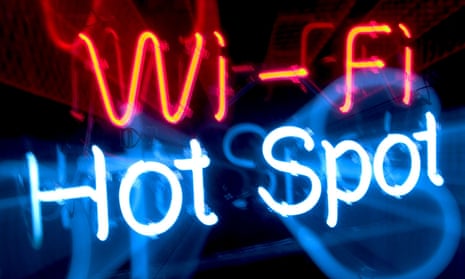Next time you feel frustrated while trying to connect to a wifi network, take solace in the fact that you aren’t alone: millions of others have the same problem.
Researchers from Tsinghua University and Tencent, the developer of WeChat, found for 15% of users it takes longer than five seconds to connect to a network and for 5%, more than 10 seconds.
Connection setup failures and large connection setup time costs are common in today’s wifi use, they say, with as many as 45% of the users suffering some level of connection setup failures.
Some of the reasons for failed connections can charitably be put down to user error: an incorrect password was to blame for 8% of dropped connections, while another 8% failed when the user switched to another network – presumably a large number of them the result of them realising they were about to join the wrong network.
But many more of the failed connections come down to something going wrong with the network: 15% of connections timed out, and 9% of them suffer a DHCP failure, resulting in an IP address not being allocated to the device.
Using a data set collected from an iOS/Android wifi manager app, the researchers analysed the connections of 5 million mobile users from four cities, eventually gathering information about 7 million mobile access points and 400 million wifi sessions.
Breaking the connection down into four phases – scanning for the network, associating with it, authenticating with it, and obtaining an IP address – the researchers find that the first phase is responsible for the plurality of long delays. Scanning for a network involves listening for packets from wireless networks to find which are available, and then replying to them asking things like their data rates. If the answers are satisfactory, the access point gets added to the list of compatible wifi networks.
For connection delays longer than 15 seconds, 40% of them also feature a scan time of 11.6 seconds or longer. The potential reason, according to the paper, is that the response packets from the wireless network aren’t heard by the phone, which forces the entire process to restart from the top. In a particularly noisy environment, that can cycle multiple times, lengthening the connection time greatly.
The authors argue that the issue is potentially solvable: by intelligently sorting access points before the user picks which they connect to, devices could push users to ones which are likely to be faster. Doing so, in their tests, pushed the proportion of failed connections down to just under 4%.
The downside, of course, is that a chunk of wifi networks will be categorised as “slow” and rendered unavailable for connection. In the long run, whether such an approach would work depends on how you deal with wifi networks: if you connect to open networks regularly, looking for a better or cheaper connection than your mobile data, it would help you pick which to join. But if you’re a more security-conscious user, who only connects to a small number of known networks, your better bet is to try and fix those networks themselves. Get a new router, move closer to the aerials, or maybe just find a new coffee shop.
